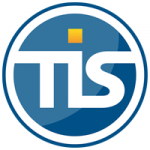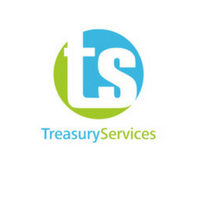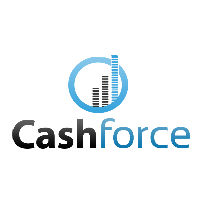How does a FX Forward transaction work?
| 27-11-2017 | treasuryXL |
FX Forward Contract
A Foreign Exchange Swap (also known as a FX Forward) is a two-legged transaction where one currency is sold or bought against another currency at a determined date, and then simultaneously bought or sold back against the other currency at a future date. Normally this means the first transaction would take place at the prevailing spot rate and settle on the spot date, whilst the forward transaction would prevail at an agreed forward rate and settle on the agreed forward date. The difference between the Spot price (or first price) and the Forward price (or second price) represents the FX Forward and is expressed as Swap points.
What are Swap points?
Swap points represent the cost of borrowing one currency, whilst simultaneously lending another currency for a time period equal to the swap period. Swap points are therefore the cost of carry netted out between two currencies and used to adjust the existing Spot price to express the Forward price.
Worked example
Currency 1 ABC
Currency 2 XYZ
Period 6 months
Days in period 183
Interest rate 6 months ABC 4%
Interest rate 6 months XYZ 7%
Spot ABC/XYZ 2.1025
For ABC 1,000,000.00 there are XYZ 2,102,500.00
ABC 1,000,000.00 * (1+4/100*183/360) = ABC 1,020,000.00
XYZ 2,102,500.00 * (1+7/100*183/360) = XYZ 2,177,313.96
XYZ 2,177,313.96/ABC 1,020,333.33 = 2.1339
Swap points = +/+ 314 pips
What does this mean?
The Forward price of 2.1339 is higher than the Spot price of 2.1025 and means that the currency ABC trades at a forward premium to currency XYZ. Therefore, the Swap points of 314 pips are added to the current Spot price. A bank that is quoting would only quote the Swap points. A two-way quote would look something like 304/324. At 304 the bank would sell and buy ABC – spot against 6 months – against buying and selling XYZ. At 324 they would do the complete reverse.
So is the Forward price the same as a future?
No, the Forward price is not an attempt to determine the future value of currency ABC expressed in the price of currency XYZ. It is a price that is derived by notionally hedging the notional values of both currencies against their respective interest rates that are applicable at that moment in time. The Forward price is an example of interest rate parity – a state of non-arbitrage or equilibrium where traders are indifferent to either as there is no monetary advantage in either. Forwards are traded ‘Over the Counter’ and not via an exchange. Regardless of what the future value of spot ABC/XYZ is, once the trade has been executed there can only ever be opportunity loss or profit in the bookkeeping.
Variations
FX Forwards can also be forward starting – a client might wish to create/hedge an exposure starting in 4 months’ time and with a tenor of 6 months. This would be seen as a 6 month starting in 4 months’ time – or a 4m*10m. Such a Forward would be calculated from the present spot to both 4 months and 10 months, with the present Spot rate adjusted for the Forward price for 4 months to reflect the new starting price.
Alternatively, instead of swapping a position, a client might just wish to hedge their exposure/obligation in the future by trading ‘Outright’. If they were to buy ABC forward they would enter into a FX Swap (sell ABC at spot and buy forward) and then immediately buy ABC at spot, offsetting the spot leg of the FX Swap.
What moves the price?
Changes in the underlying interest rates of both currencies will affect the calculation. Also as the interest rate differential of the two currencies is expressed as a price of the existing spot rate, changes in the spot rate will also cause changes in the outcome of the calculation – though generally smaller than those caused by changes in interest rates.
Why trade FX Forwards?
FX Forwards allow a company to hedge future exposure/obligations. Once the contract has been struck that value is confirmed and is not subject to ‘mark-to-market’ variation orders as happens with an off-balance-sheet instrument. An exposure in one currency can be transformed into another currency via use of a FX Forward. An expected inflow or outflow that is delayed can be rolled forward by using a FX Forward.

Cash Management and Treasury Specialist




 The DACT (Dutch association of Corporate Treasurers) will be holding their annual Treasury Fair in Noordwijk at the Hotel van Orange on 23rd and 24th November 2017 – the most important annual treasury event in the Netherlands. Discover treasury best practices, learn about the latest trends and exchange experiences. It will contain 9 practical workshops spread out throughout the day on topics including, among others, trade finance, supply chain finance, liquidity forecasting, cyber security and the Blockchain. There are more than 50 exhibitors present at the Trade Fair including Treasury Intelligence Solutions GmbH- a partner of treasuryXL.
The DACT (Dutch association of Corporate Treasurers) will be holding their annual Treasury Fair in Noordwijk at the Hotel van Orange on 23rd and 24th November 2017 – the most important annual treasury event in the Netherlands. Discover treasury best practices, learn about the latest trends and exchange experiences. It will contain 9 practical workshops spread out throughout the day on topics including, among others, trade finance, supply chain finance, liquidity forecasting, cyber security and the Blockchain. There are more than 50 exhibitors present at the Trade Fair including Treasury Intelligence Solutions GmbH- a partner of treasuryXL.
 The DACT (Dutch association of Corporate Treasurers) will be holding their annual Treasury Fair in Noordwijk at the Hotel van Orange on 23rd and 24th November 2017 – the most important annual treasury event in the Netherlands. Discover treasury best practices, learn about the latest trends and exchange experiences. It will contain 9 practical workshops spread out throughout the day on topics including, among others, trade finance, supply chain finance, liquidity forecasting, cyber security and the Blockchain. There are more than 50 exhibitors present at the Trade Fair including Treasury Services- a partner of treasuryXL.
The DACT (Dutch association of Corporate Treasurers) will be holding their annual Treasury Fair in Noordwijk at the Hotel van Orange on 23rd and 24th November 2017 – the most important annual treasury event in the Netherlands. Discover treasury best practices, learn about the latest trends and exchange experiences. It will contain 9 practical workshops spread out throughout the day on topics including, among others, trade finance, supply chain finance, liquidity forecasting, cyber security and the Blockchain. There are more than 50 exhibitors present at the Trade Fair including Treasury Services- a partner of treasuryXL. The DACT (Dutch association of Corporate Treasurers) will be holding their annual Treasury Fair in Noordwijk at the Hotel van Orange on 23rd and 24th November 2017 – the most important annual treasury event in the Netherlands. Discover treasury best practices, learn about the latest trends and exchange experiences. It will contain 9 practical workshops throughout the day on topics including, trade finance, supply chain finance, liquidity forecasting, cyber security and the Blockchain. There are more than 50 exhibitors present at the Trade Fair including Cashforce – a partner of treasuryXL, who are also presenting a Workshop.
The DACT (Dutch association of Corporate Treasurers) will be holding their annual Treasury Fair in Noordwijk at the Hotel van Orange on 23rd and 24th November 2017 – the most important annual treasury event in the Netherlands. Discover treasury best practices, learn about the latest trends and exchange experiences. It will contain 9 practical workshops throughout the day on topics including, trade finance, supply chain finance, liquidity forecasting, cyber security and the Blockchain. There are more than 50 exhibitors present at the Trade Fair including Cashforce – a partner of treasuryXL, who are also presenting a Workshop. Both from student perspective as well as from educators we receive signals they want to invest in training and education. Some articles have been written about what is out there (read
Both from student perspective as well as from educators we receive signals they want to invest in training and education. Some articles have been written about what is out there (read  The DACT (Dutch association of Corporate Treasurers) will be holding their annual Treasury Fair in Noordwijk at the Hotel van Orange on 23rd and 24th November 2017 – the most important annual treasury event in the Netherlands. Discover treasury best practices, learn about the latest trends and exchange experiences. It will contain 9 practical workshops spread out throughout the day on topics including, among others, trade finance, supply chain finance, liquidity forecasting, cyber security and the Blockchain. There are more than 50 exhibitors present at the Trade Fair including Tipco Treasury & Technology GmbH- a partner of treasuryXL.
The DACT (Dutch association of Corporate Treasurers) will be holding their annual Treasury Fair in Noordwijk at the Hotel van Orange on 23rd and 24th November 2017 – the most important annual treasury event in the Netherlands. Discover treasury best practices, learn about the latest trends and exchange experiences. It will contain 9 practical workshops spread out throughout the day on topics including, among others, trade finance, supply chain finance, liquidity forecasting, cyber security and the Blockchain. There are more than 50 exhibitors present at the Trade Fair including Tipco Treasury & Technology GmbH- a partner of treasuryXL.